Out of the box seaborn does a very good job to plot a 2D KDE or jointplot. However it is not returning anything like a function that I can evaluate to numerically read the values of the estimated density.
How can I evaluate numerically the density that sns.kdeplot or jointplot has put in the plot?
Just for completeness. I see something interesting in the scipy docs, stats.gaussian_kde but I am getting very clunky density plots,
which for some reason because of missing extent are really off compared to the scatter plot. So I would like to stay away from the scipy kde, at least until I figure how to make it work why pyplot is so much more "not smart" as seaborn is.
Anyhow, the evaluate method of the scipy.stats.gaussian_kde does its job.
